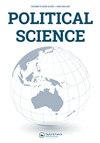东亚和东南亚的妇女与政治
IF 1.2
4区 社会学
Q3 POLITICAL SCIENCE
引用次数: 0
摘要
在东亚和东南亚,女性的代表性仍然低于全球平均水平。除了东帝汶和台湾,没有一个国家的女议员达到30%的“临界质量”——这个数字被视为影响政策所需的最低比例。东亚和东南亚是一个多元化的地区,与南亚不同,在这里,有影响力的女性领导人的崛起是最近几十年才出现的。随着科拉松·阿基诺、梅加瓦蒂、英拉·西那瓦、朴槿惠和昂山素季等杰出女性领导人的崛起,对王朝或家族关系的研究变得更加突出,政治学和区域研究期刊现在经常发表关于亚洲性别和政治的文章。以前,基于历史档案、民族志或精英访谈的定性、描述性工作占主导地位。然而,随着越来越多的跨国和公众意见数据集的出现,定量研究开始蓬勃发展。类似于那些处理全球北方,理论来解释妇女在政治上的供给和需求在亚洲包括:(1)国际因素和扩散理论,(2)妇女的行动主义和群众运动,(3)制度设计(如配额,选举制度,候选人选择,政党政治),(4)文化和宗教。除了将女性如何参与政治理论化的文学作品之外,另一类文学作品探讨了女性参与政治的经历。谁在选举中获胜?女性候选人和政治家的经历是什么?真正代表女性的障碍是什么?调查结果表明,受过高等教育的专业精英女性赢得选举,而内阁中的女性往往拥有“软”和较低调的职位。此外,许多杰出的女性国家和政党领导人都是通过与杰出的男性领导人的关系获得权力的。女性政治家的经历也因政治层面的不同而不同,即地方或国家层面。妇女代表的地位进一步受到政权类型的影响。一个引人注目的反常现象是,该地区一党制专制国家的女性政治家数量高于老牌民主国家。然而,拥有大量女性代表的专制政权是否能更好地服务于女性利益?妇女与民主革命的关系是什么?在菲律宾、台湾和韩国,妇女运动和妇女领袖在民主革命中发挥了关键作用。需要更多的研究来评估妇女在这两种制度中的实质性代表性。虽然从性别的角度审视政治很重要,但理解性别不平等与少数民族和宗教身份之间的关系也同样重要。到目前为止,很少有研究人员采用交叉方法来研究政治中的女性如何因多种压迫来源而处于不利地位。本文章由计算机程序翻译,如有差异,请以英文原文为准。
Women and Politics in East and Southeast Asia
Women’s descriptive representation in East and Southeast Asia remains lower than global average. Apart from Timor-Leste and Taiwan, no country has achieved the 30 percent “critical mass” of women parliamentarians—a number seen as the minimum proportion necessary to influence policies. East and Southeast Asia is a diverse region where, unlike in South Asia, the rise of powerful women leaders came about only in recent decades. With the rise of prominent women leaders, such as Corazon Aquino, Megawati Sukarnoputri, Yingluck Shinawatra, Park Geun-hye, and Aung San Suu Kyi, studies on dynastic or familial ties have become more prominent, and political science and area studies journals now publish frequently on gender and politics in Asia. Previously, qualitative, descriptive work based on historical archives, ethnography, or elite interviews has dominated. With more cross-country and public opinion data sets, however, quantitative studies have flourished. Similar to those dealing with the Global North, theories to explain the supply and demand of women in politics in Asia include: (1) international factors and diffusion theory, (2) women’s activism and mass movements, (3) institutional designs (e.g., quotas, electoral systems, candidate selection, party politics), and (4) culture and religion. Beyond the literature that theorizes how women engage in politics, another body of literature explores the experiences of women in politics. Who wins in elections? What are the experiences of women candidates and politicians? What are the barriers to substantively representing women? Findings demonstrate that highly educated, professional elite women win elections, while women in cabinet tend to hold “soft” and lower profile portfolios. Moreover, many prominent female state and party leaders come to power through their connection with prominent male leaders. The experiences of female politicians also differ depending on the level of politics, namely, local or national level. The status of women’s representation is further impacted by the regime type. A striking anomaly is the higher number of women politicians in authoritarian, one-party states than in established democracies in the region. Yet do authoritarian regimes with high numbers of female representatives better serve women’s interests? What is the relationship between women and democratic revolutions? In the Philippines, Taiwan, and South Korea, women’s activism and women leaders played key roles in democratic revolutions. More research is needed on assessing women’s substantive representation in both regimes. While it is important to examine politics through the lens of gender, it is equally important to understand how gender inequality intersects with ethnic minority and religious identities. Thus far, few researchers have adopted intersectional approaches in examining how women in politics can be disadvantaged by multiple sources of oppression.
求助全文
通过发布文献求助,成功后即可免费获取论文全文。
去求助
来源期刊

Political Science
POLITICAL SCIENCE-
CiteScore
0.90
自引率
0.00%
发文量
13
期刊介绍:
Political Science publishes high quality original scholarly works in the broad field of political science. Submission of articles with a regional focus on New Zealand and the Asia-Pacific is particularly encouraged, but content is not limited to this focus. Contributions are invited from across the political science discipline, including from the fields of international relations, comparative politics, political theory and public administration. Proposals for collections of articles on a common theme or debate to be published as special issues are welcome, as well as individual submissions.
 求助内容:
求助内容: 应助结果提醒方式:
应助结果提醒方式:


